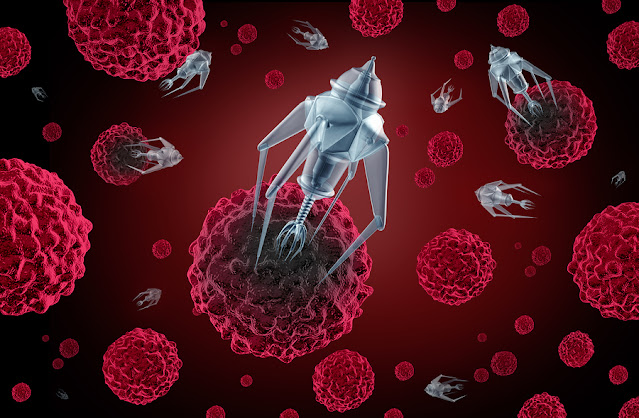Cooling the Rails: Exploring the Intricacies of HVAC Systems for Optimal Train Travel
With comfortable travel being a top priority for
passengers, train HVAC systems play a vital role in ensuring a pleasant journey
for all. In this article, we delve into the inner workings of train HVAC and
explore the key components, technologies and maintenance involved.
HVAC Components
At the core of any train HVAC system are the essential components that work
together to regulate air quality and temperature. Some of the major components
include:
Heating, Ventilation and Air Conditioning Units
Located on the roof of each train car, HVAC units are powered units that house
the heating, cooling and ventilation mechanisms. Larger trains may have
multiple units to ensure adequate climate control. The units draw in outside
air, condition it and circulate it through the train car via ductwork.
Air Filters
Air filters are installed in the HVAC units and at air supply vents to trap
dust, pollen and other allergens from entering the cabin. They are routinely
inspected and replaced to maintain optimal air quality. More advanced HEPA and
activated carbon filters provide a higher level of filtration.
Air Distribution System
A sophisticated network of ductwork transports the conditioned air from the
HVAC units to supply vents located throughout the train car. Distribution
dampers and sensors ensure a balanced airflow to all areas. Return vents pull
used air back to the HVAC units.
Control Systems
Train HVAC systems incorporate computerized control and monitoring systems.
Sensors track parameters like temperature, humidity and air quality while
control interfaces allow operators to adjust the settings as needed. Automation
enables more precise climate regulation.
Heating Technologies
Several technologies can be used to heat train cabins, including electric
resistive heaters, heat pumps or onboard boiler systems that generate steam or
hot water as the heat source. Gas appliances are also an option depending on
the train model.
Cooling Technologies
Air conditioners use refrigerant gas compression and condensation to lower the
air temperature. On trains, self-contained packs or centralized systems may be
installed. Some trains feature heating/cooling units that can provide both
functions using heat pumps.
Maintenance and Operations
With trains operating daily in all weather extremes, ongoing maintenance is
crucial to sustain healthy HVAC performance. Some key maintenance activities
include:
Filter Replacement
Air filters clog over time and require periodic swapping to prevent restricted
airflow or circulation of particles back into the cabin. Scheduled filter
changes are important.
Inspections and Cleaning
Routine inspections check for leaks, damaged components or mold/mildew growth
that needs cleaning. External units and internal ducts/vents are thoroughly
examined.
Repairs and Replacements
Worn or faulty parts like compressors, fans or controls get repaired/replaced
to fix any climate control issues and ensure long-term reliability of the
entire HVAC system.
Preventative Maintenance
Scheduled maintenance routines like lubricating moving components, calibration
of sensors and inspection of electrical terminals help catch small problems
before they escalate.
Passenger Comfort Technologies
To augment the core HVAC system, some trains employ additional technologies aimed
at boosting passenger comfort:
Individual Vents and Controls
Personal vents and digital controls at each seat allow riders to fine-tune
airflow and temperature precisely to their liking.
Humidifiers and Dehumidifiers
These maintain ideal humidity levels, eliminating dryness in winter or
stickiness in summer for a comfortable experience.
Air Quality Monitoring
Onboard air quality sensors continuously track pollutant/allergen levels and
filter intake air more aggressively if levels rise above acceptable standards.
Ozone Generators
These Infuse carriages with trace amounts of ozone to purge odors and destroy
airborne bacteria/viruses for a fresher cabin environment.
The Future of Train HVAC
As train technologies advance, future Train
HVAC systems may integrate:
More Efficient Systems
Next-gen designs can cut energy use through features like waste heat recovery,
more sophisticated controls and renewable-ready electrification.
Smarter Automation
Advanced IoT sensing and analytics optimize operations while predictive
maintenance identifies troublespots before breakdowns occur.
Customizable Climate Zones
Separate climate control for sections/cars and customizable presets based on
passenger profiles enhance comfort for all riders.
Onboard Filtration Upgrades
New filtration mediums capture even finer particles & pathogens while
reducing replacement/maintenance needs.
Sustainability Focus
Low global warming refrigerants, energy recovered braking/regeneration help
lower trains' environmental footprint for greener travel.
Sophisticated yet robust, train HVAC enables millions of passengers to travel
in a thermally-controlled environment each day with minimal disruptions.
Continued innovations ensure this crucial system rises to meet evolving passenger
needs and industry sustainability objectives.
For
More details on the topic:
https://www.newsstatix.com/train-hvac-trends-size-and-share-analysis/




Comments
Post a Comment